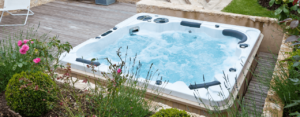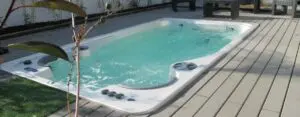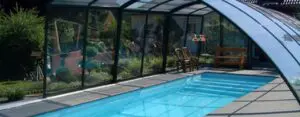October 17, 2019
Category: Swim Spa
Many people are increasingly beginning to appreciate the benefits of cold water swimming during the autumn and winter months. From the boost that this can provide to the immune system to the mental and physical sense of wellbeing that can result from a chilly dip, there are many good reasons why you might want to consider venturing into the water in the colder months. If you’re going to do that then these are our top tips for making sure you get the most from the experience.
- Don’t stop swimming – just reduce time and distance. It’s not feasible to swim the same distances, or to stay in the water for the same length of time, once October has ended. But you can still enjoy a swim, just for shorter times and distances.
- Cold water acclimatisation is simple. All you need to do is take regular dips in cold water, starting off with a very short period of time and then building up as your body allows. A water temperature of less than 10 degrees C will feel cold and as it drops by each 1C after that the reduction in temperature will be more noticeable. Remember to factor in the outside environment and wind temperature when deciding how long to stay in.
- You don’t need to get a wetsuit. In fact, most cold water swimmers don’t wear a wetsuit just conventional swimming attire. If you think you’re likely to suffer from the cold then you might want to consider investing in neoprene socks and gloves for the hands and feet.
- Safety is essential. That means ensuring that you can get in and out of the water easily and that there are facilities within easy reach where you can warm up afterwards.
- Cold water swimmers have each other’s backs. So, if possible, it’s a good idea to go swimming with a group.
- Make sure you can be seen. It’s important to ensure that you can be seen by boats and other vehicles, as those driving them may not expect anyone to be in the water swimming during the colder months. Brightly coloured swim hats or tow floats can be a good idea to make sure you’re visible.
- Learn your limits. It can be useful to take a thermometer into the water with you and to keep a log of all your swims so that you have a record of how each one felt. This will enable you to understand your body’s limits and safely build up resistance.
- Warm up quickly when you get out. Get dressed as soon as you can and make sure that you have a warm drink on hand to help bring your temperature back up once you’re out of the water. Avoid a sudden increase in temperature, such as a hot shower, and opt for gradually adding layers and drinking something hot instead.
Swimming in colder months offers a lot of benefits and you don’t have to have a lot of kit to enjoy them.


